Grönefeld One Hertz: A Collector’s Journey
by GaryG
As regular readers know by now, my contributions to Quill & Pad range among “Behind the Lens” photo features of special watches; “You Are There” reporting on collector-related events; and “Why I Bought It” articles that describe my thinking behind purchases of individual watches.
For this special article, I have the pleasure of covering the wonderful Grönefeld One Hertz from all three perspectives!
You are there: collecting the One Hertz
For a watch fanatic, and especially for lovers of independent watch brands, it’s a dream come true to meet the makers of the watches that we admire. With the Grönefeld brothers, it’s that pleasure times two.
Our story begins with meeting Bart Grönefeld at Düsseldorf airport in preparation to ride back to the Dutch town of Oldenzaal.
After a pleasant drive, we met up with Bart’s brother, Tim, and walked to lunch, a tasty meal of local specialty Kroketten (a potato dish) washed down with the first cold beer of the day.
The clock tower you see above served as the scene for a portion of the afternoon as we climbed to the top to take in the view and to check out the mechanism of the tower clock, which to this day is maintained by their father, Sjef.
After lunch, it was back to the workshop for a tour, joined by Dutch watch pal and leading A. Lange & Söhne collector Edwin H. As descendants of a watchmaking family, Tim and Bart have plenty of wonderful watch-related items on hand, including things like the Watchmaker’s Songbook shown below.
Edwin was kind enough to capture a shot of us as Bart attempted to penetrate my jet-lagged skull with some of the technical features of the One Hertz.
It’s always a thrill to see parts in various stages of finishing. I particularly love seeing near-finished movements outside of their cases, as there’s something about being “right there” that even the clearest sapphire case back can’t reveal.
If you look carefully at the photo above, you may see that this particular movement looks a bit unusual. It is one of a limited set developed by the brothers with gold-finished plates that contrast nicely with the stainless bridges above.
Finally, the moment of truth, as the proud papas observe my pleasure at seeing my One Hertz for the first time.
The fun didn’t stop there: we continued through dinner and then a late-evening bottle of wine with the brothers and Tim’s wife, Maaike. Suffice it to say that when it was time to crawl out of bed at my hotel the next morning I knew I had had a grand time with wonderful hosts.
Why I bought it
Using my pal Terry’s taxonomy, this was pretty clearly a “patronage” purchase for me: a great watch that, perhaps more importantly, was made by two great guys.
One special added benefit was that they agreed to make this piece for me with the blue dial, usually reserved for platinum pieces, but in this case matched with the lightweight titanium case.
What I love about it
The bad news is that I don’t have space here to list all 35 (no kidding) appealing features I have on my hand-written list of “loves” about this watch, but let’s pick off a few of the biggies.
- Let’s start with the obvious: there’s that big second hand snapping across the dial with authority. I’m a big fan of discrete movement in watches (retrograde hands, jumping hours, instantaneously changing chronograph minutes and calendar dates, etc.), and this jumping second display is both the featured element of the watch overall and a great example of carving the relentless advance of time into observable chunks.
- I’m also a sucker for dimensionality in watches (like the Lange Double Split and pretty much anything by Greubel Forsey). You don’t have to flip the One Hertz over to get a three-dimensional show.
- The technical design of the independent dead seconds complication is both novel and very clever. The One Hertz movement is based on two synchronized spring barrels feeding two separate (but linked) movements – one for the hours and minutes and the other for the seconds.
This wasn’t easy to pull off technically, and ultimately a combination of features including linking the two spring barrels, hacking the movement during setting, utilizing a column wheel-based system to toggle between “set” and “run” modes, and utilizing different torque levels for the two power trains was needed to make the watch work.
One of the great things about visiting with Bart and Tim was hearing the stories about how they either considered some of these sophisticated design elements in advance or developed them over time as they problem-solved issues they encountered.
- The interaction between the two power trains is tremendously clever as well: a wheel with a smooth up-down wave is mounted on the fourth wheel pinion, gently rocking one side of a jeweled lever back and forth in a continuous motion. The other side of the lever interacts with an escape wheel sized to tick off time in one-second increments, synchronized with the ticking of sixths from the main balance. These key connecting parts are shown in the photo below.
Interestingly, the sole function of the lever is to regulate the release of power coming from the far side of the seconds escapement – no power is transmitted through the mechanism and, as a result the operation of the jump seconds, neither exacts wear and tear on the wavy wheel nor disrupts the amplitude of (or drains power from) the main movement.
- It looks good! And some of the prettiest touches serve double duty: the screw-mounted nameplates hide another set of screws that anchor the dial assembly securely to the movement. Tim and Bart actually drew their desired dial layout first, and then figured out how to make the movement match it.
Overall, this watch meets my number one criterion: coherence. Nothing seems pasted on or gratuitous; the design features complement each other; and form and function serve each other with excellence.

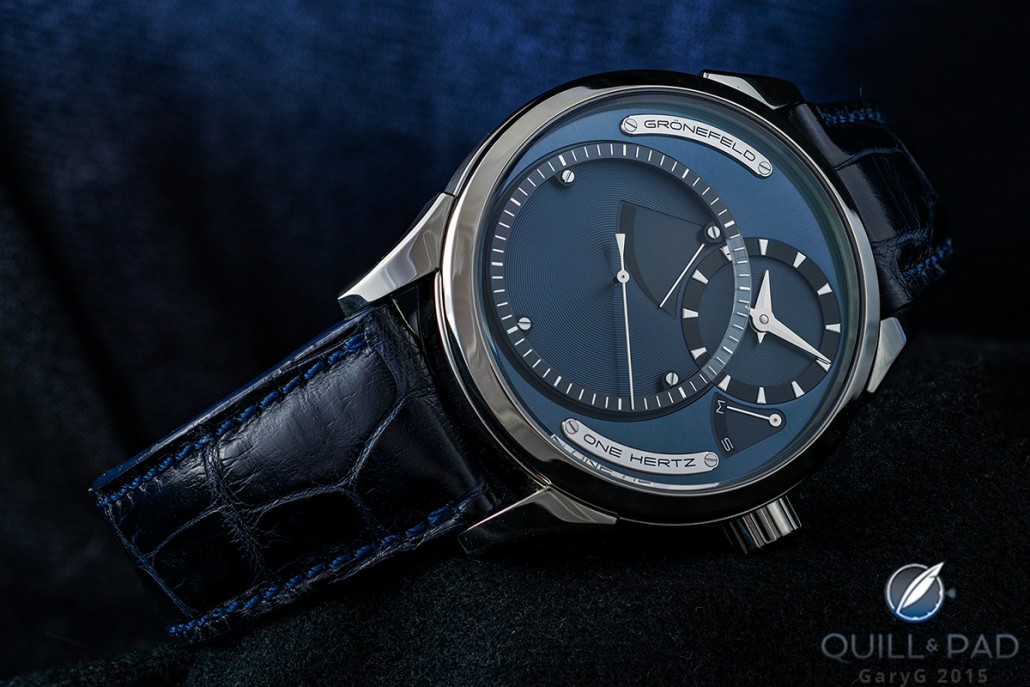
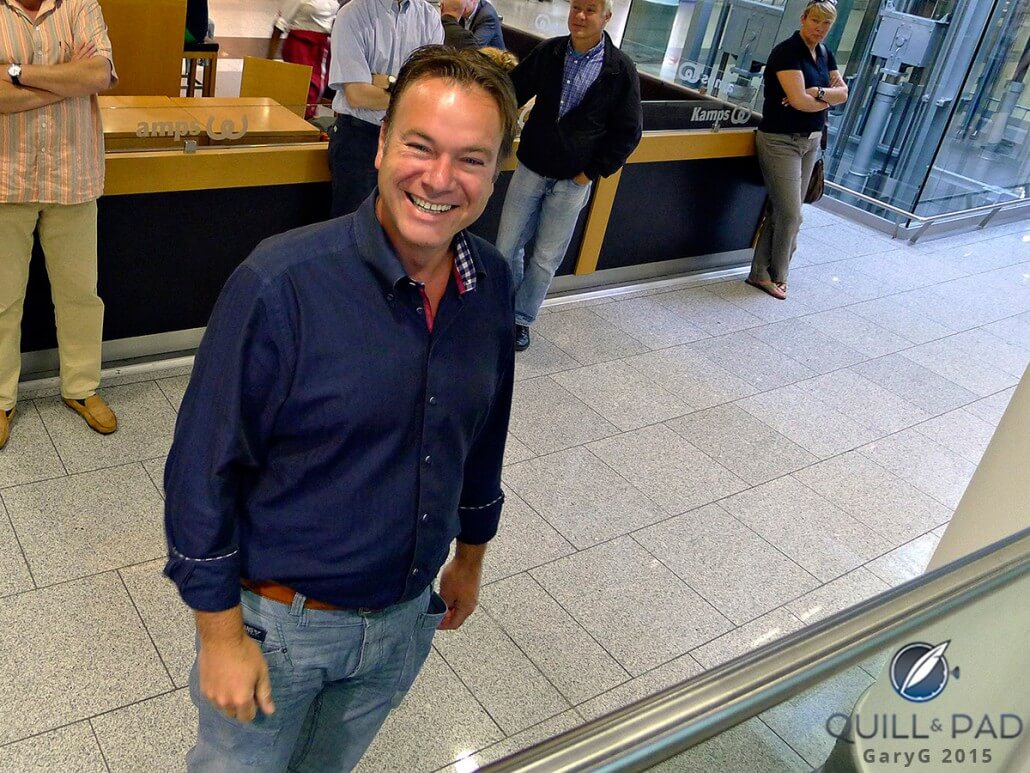

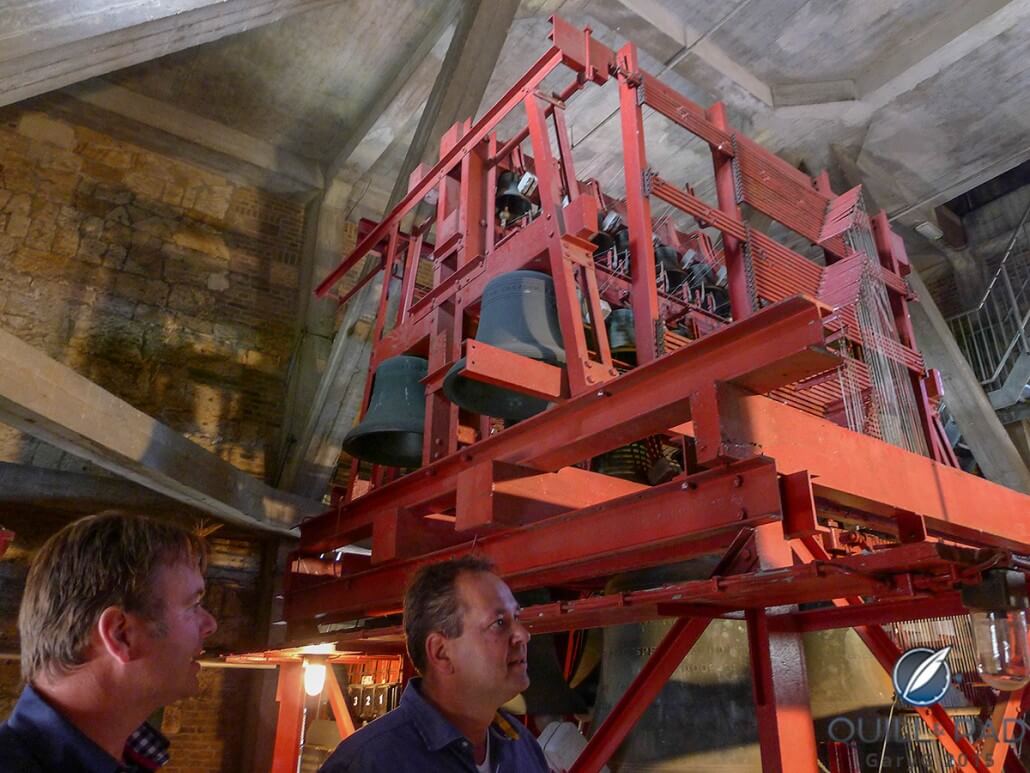
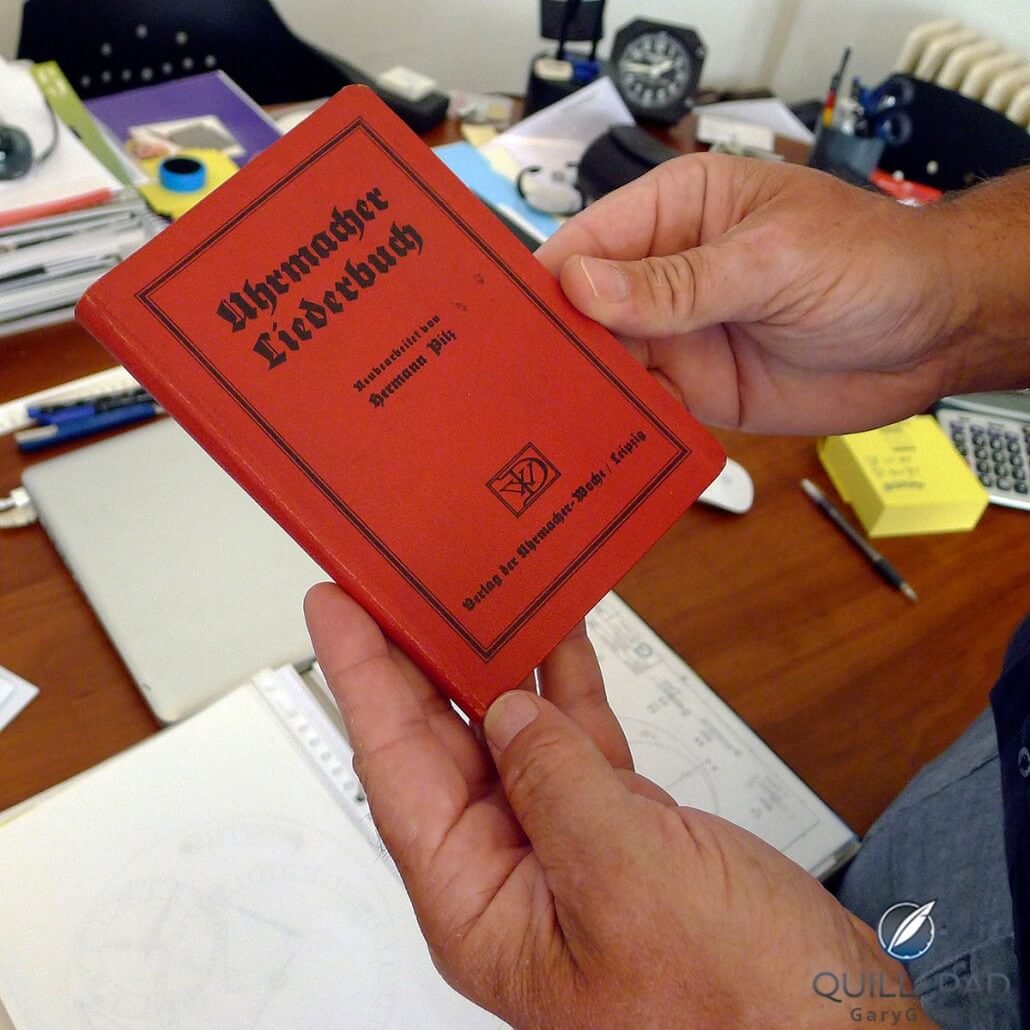
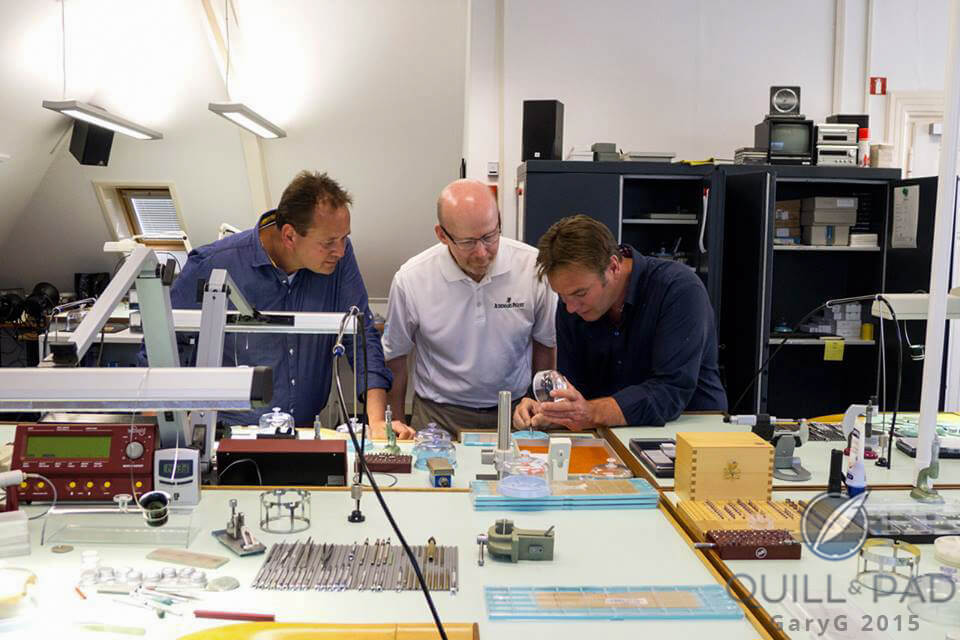
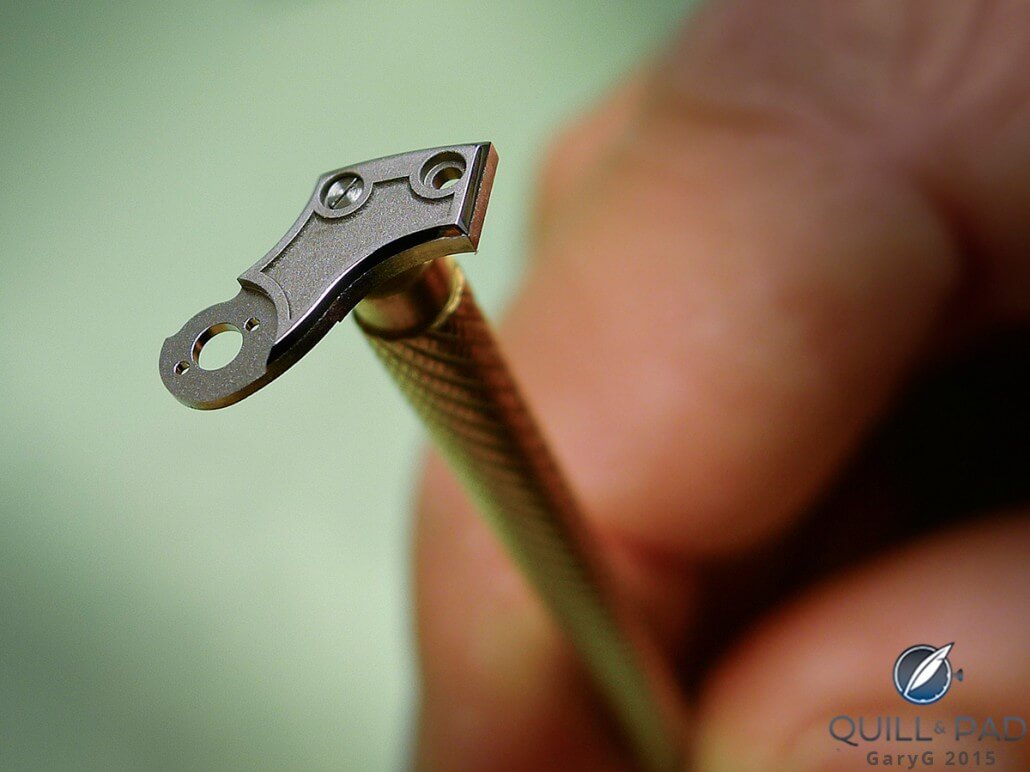
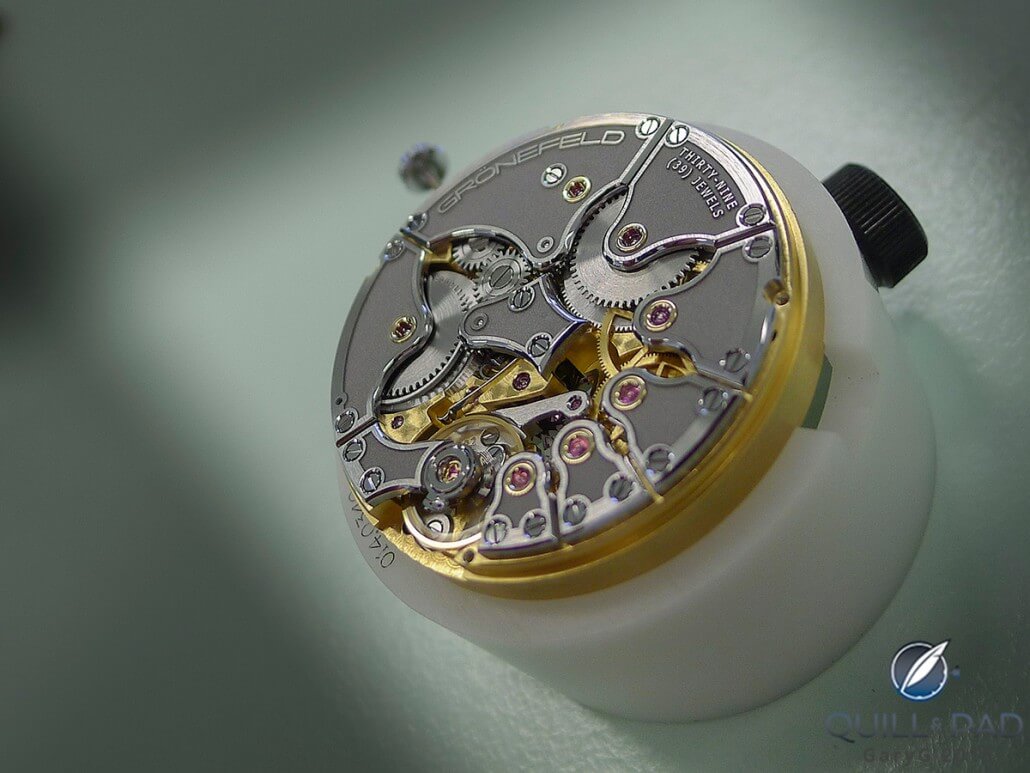
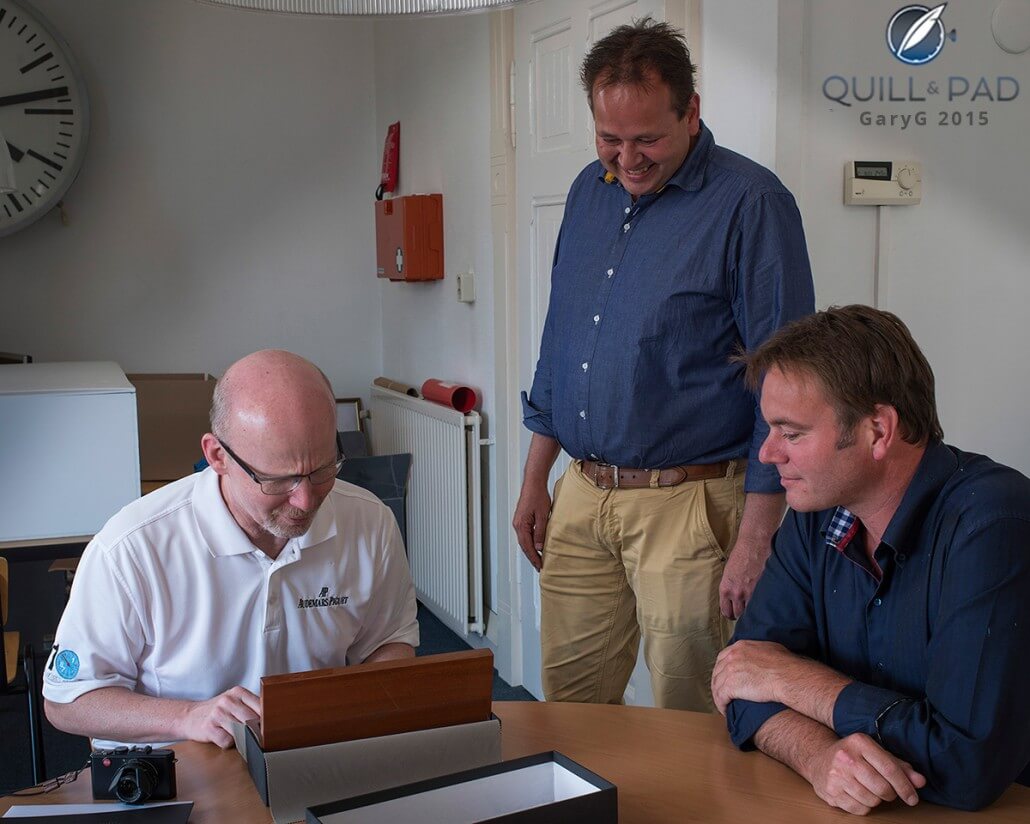
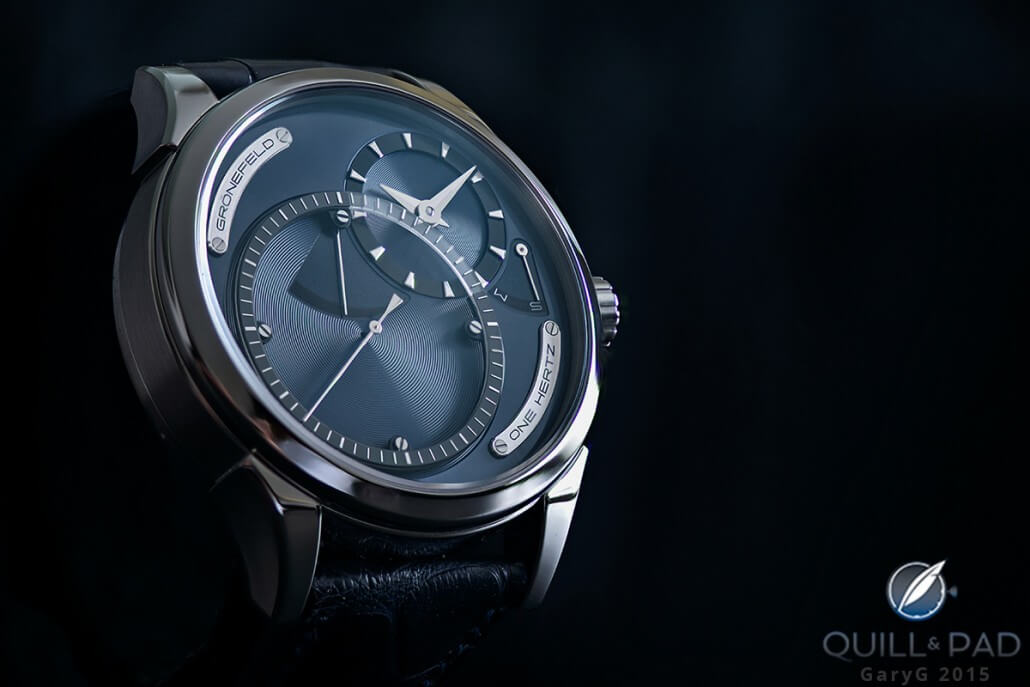
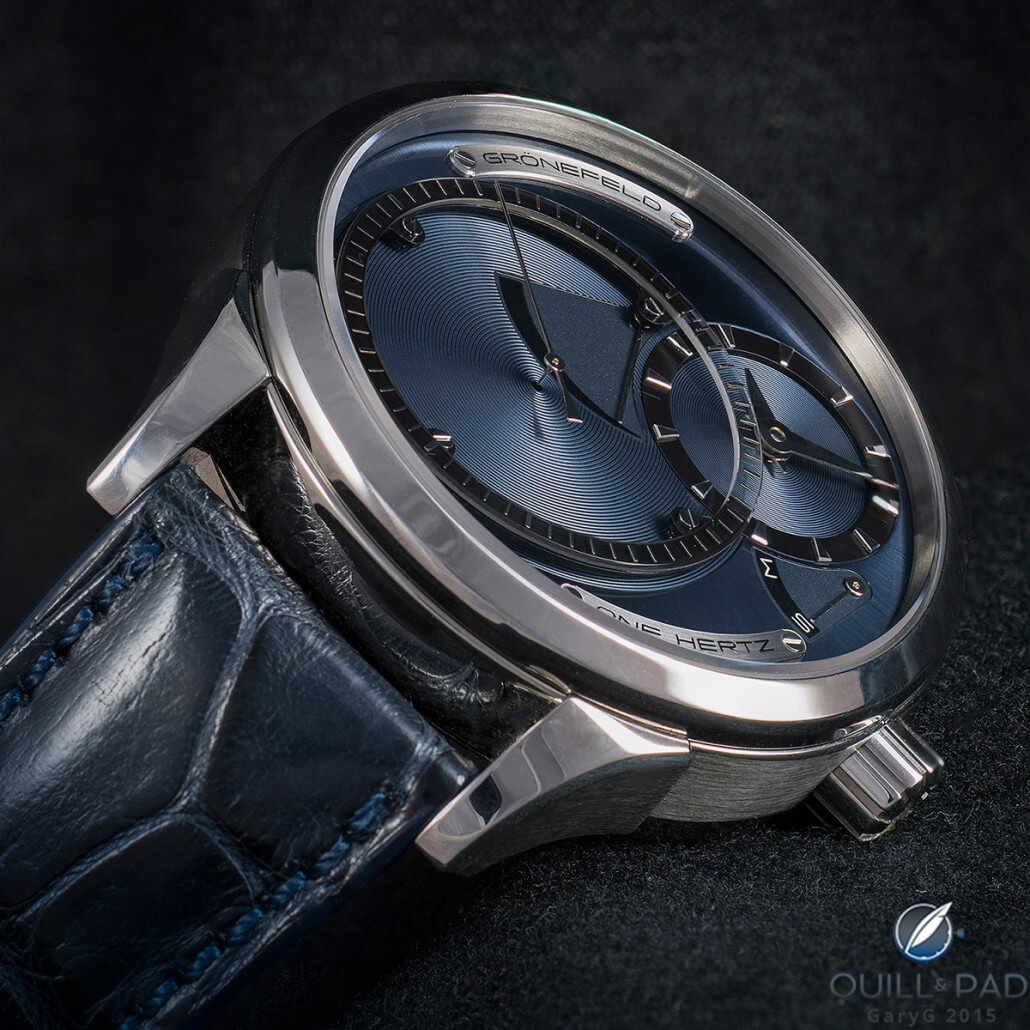
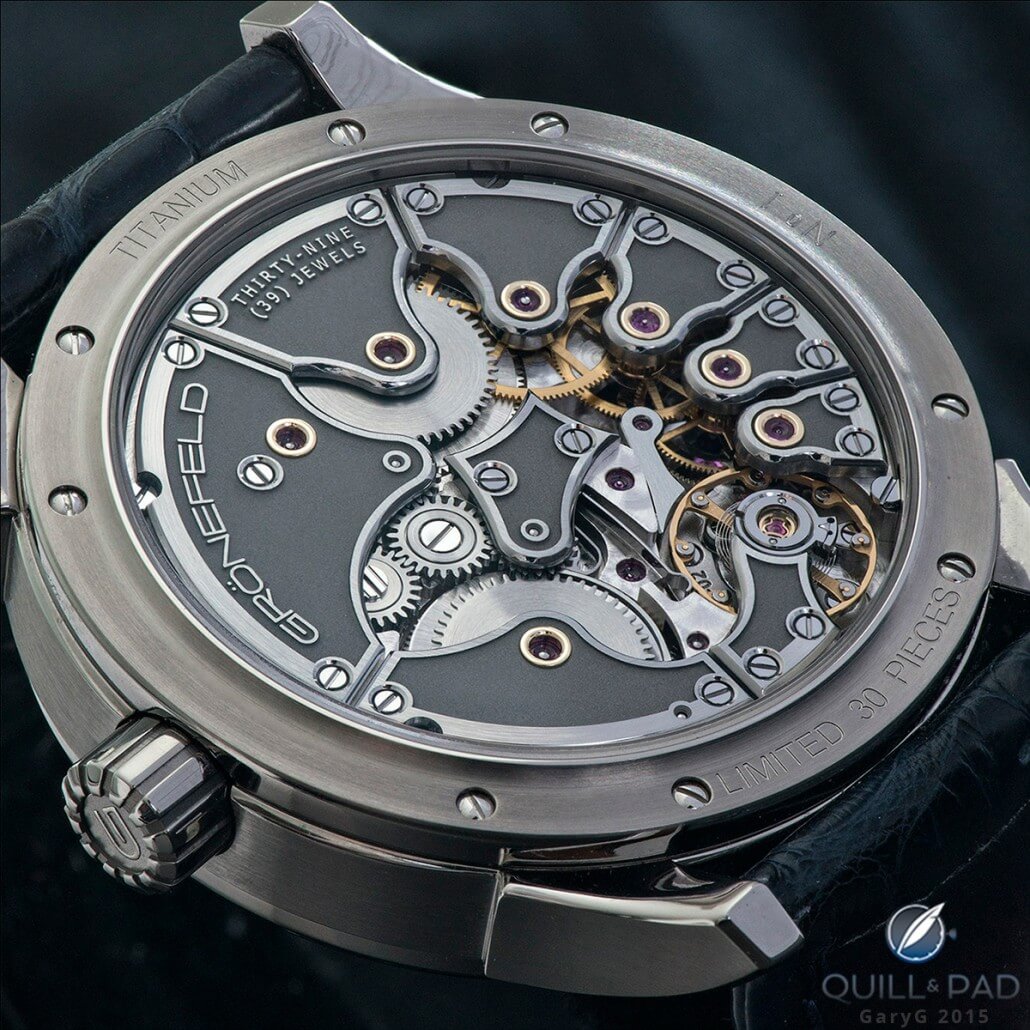
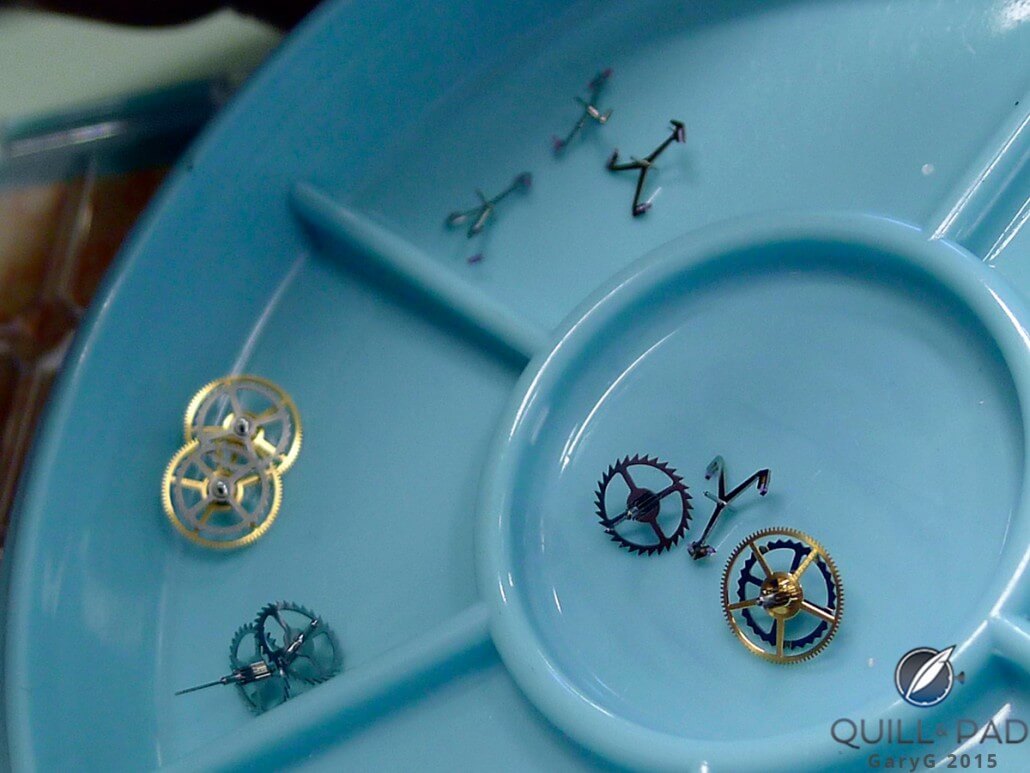
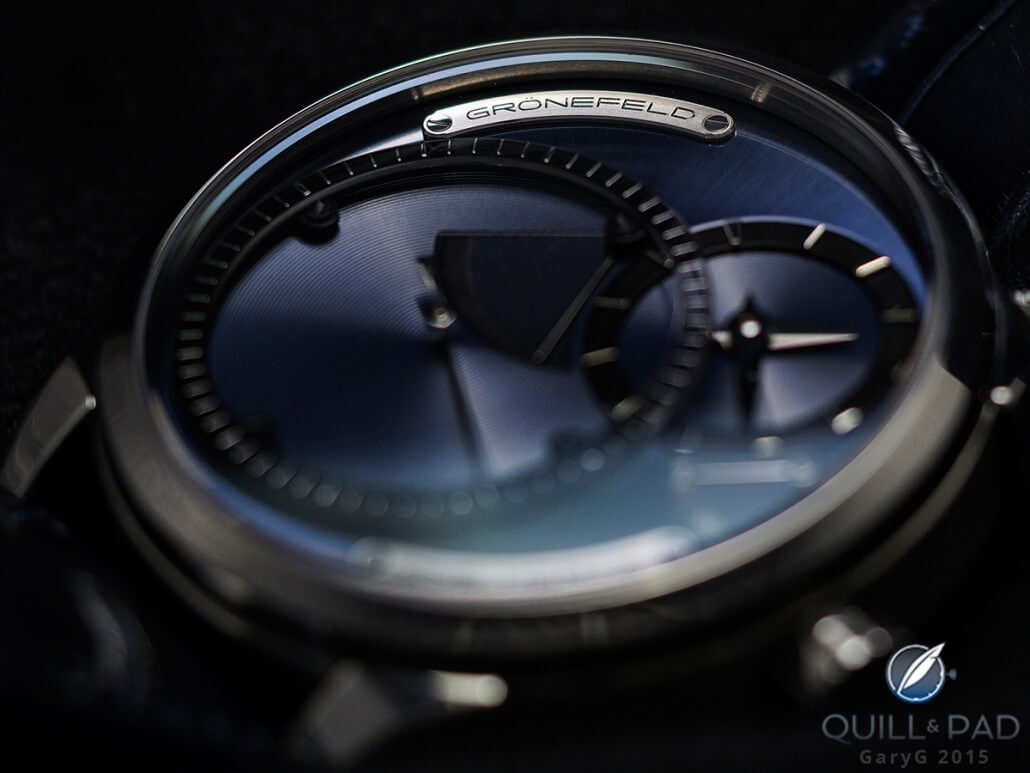
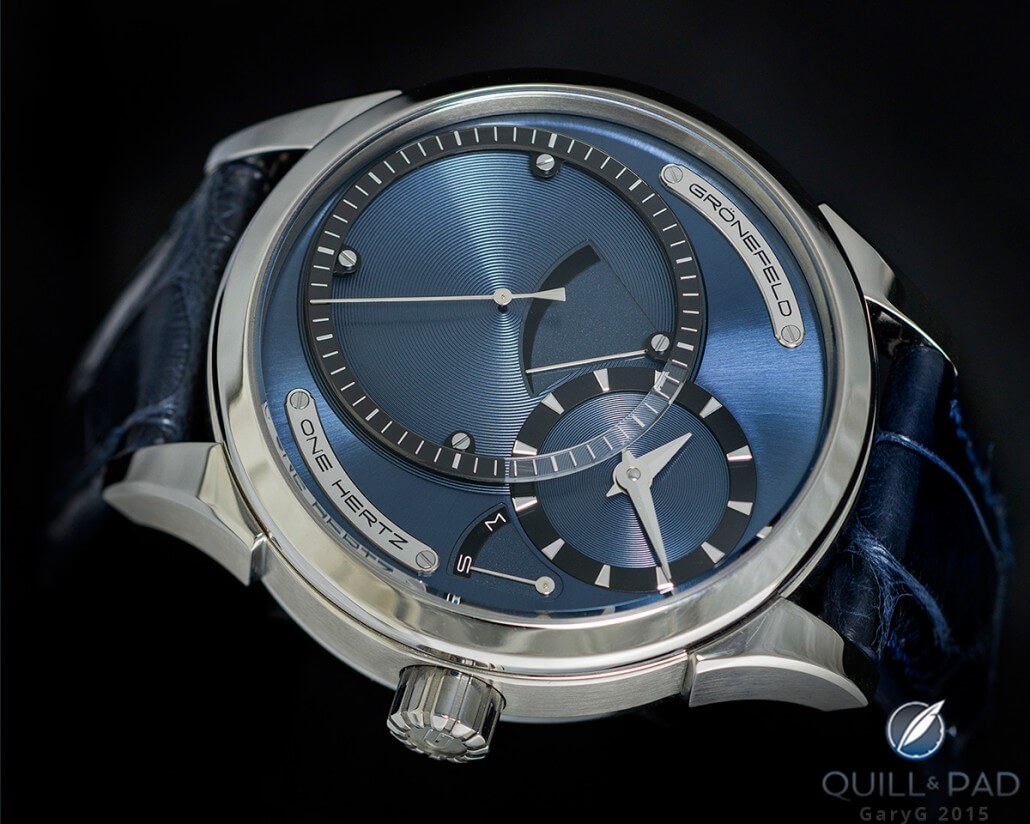
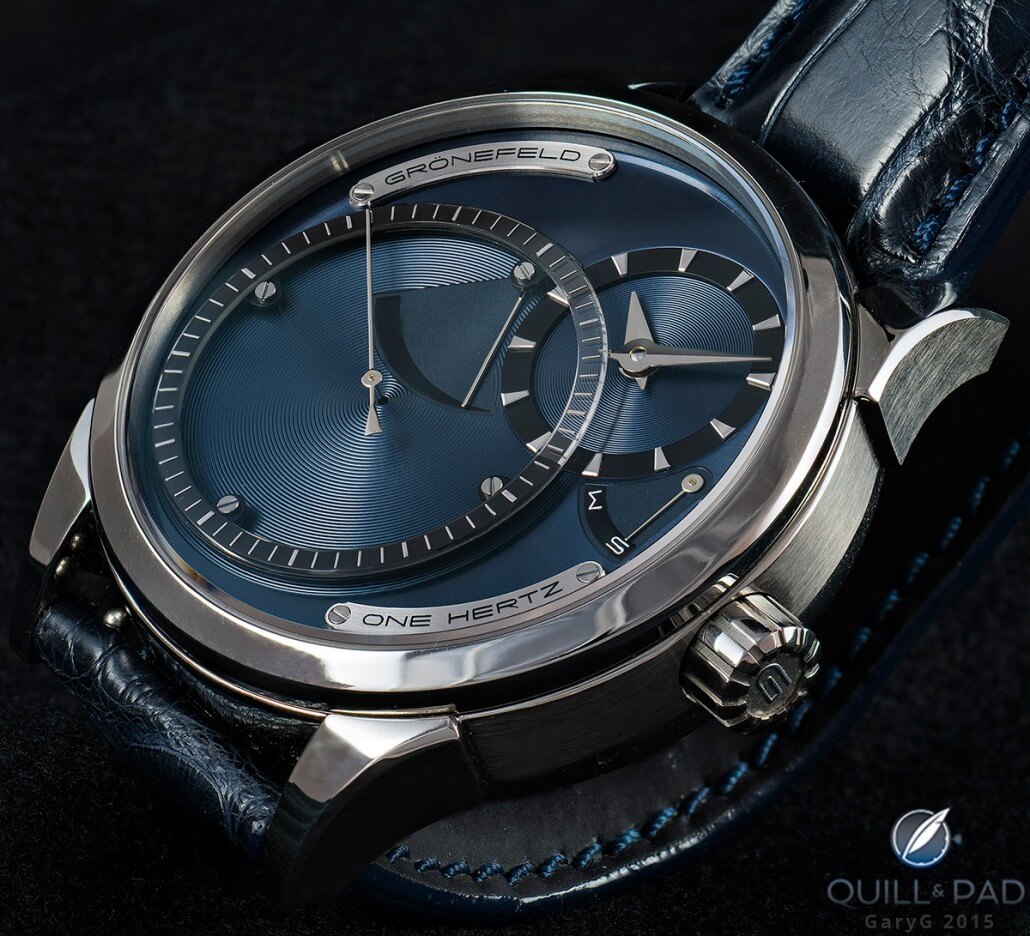

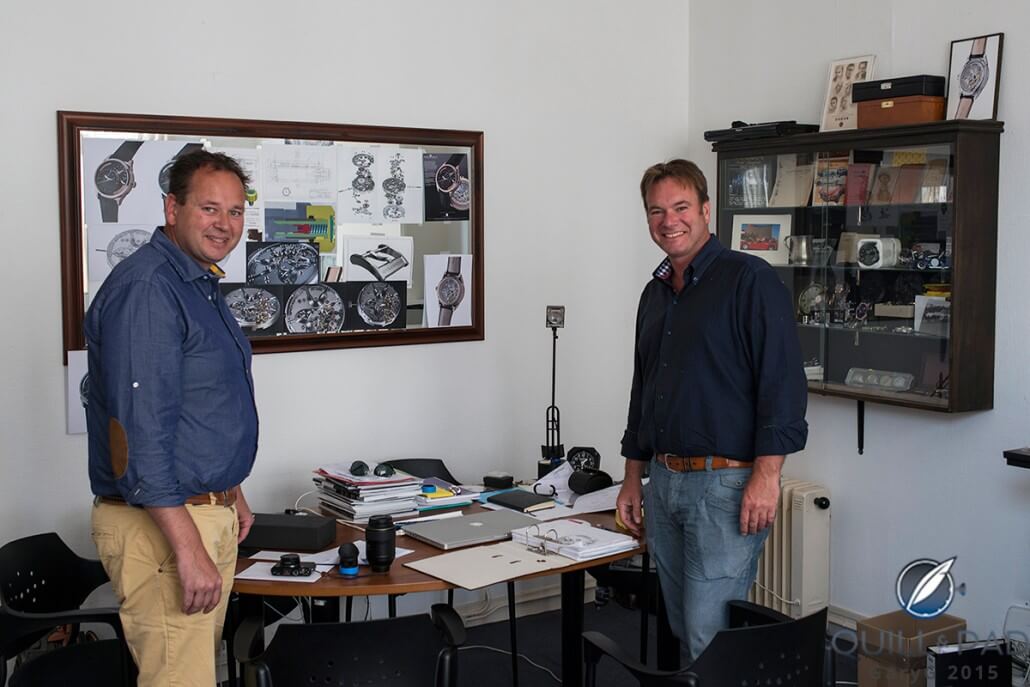
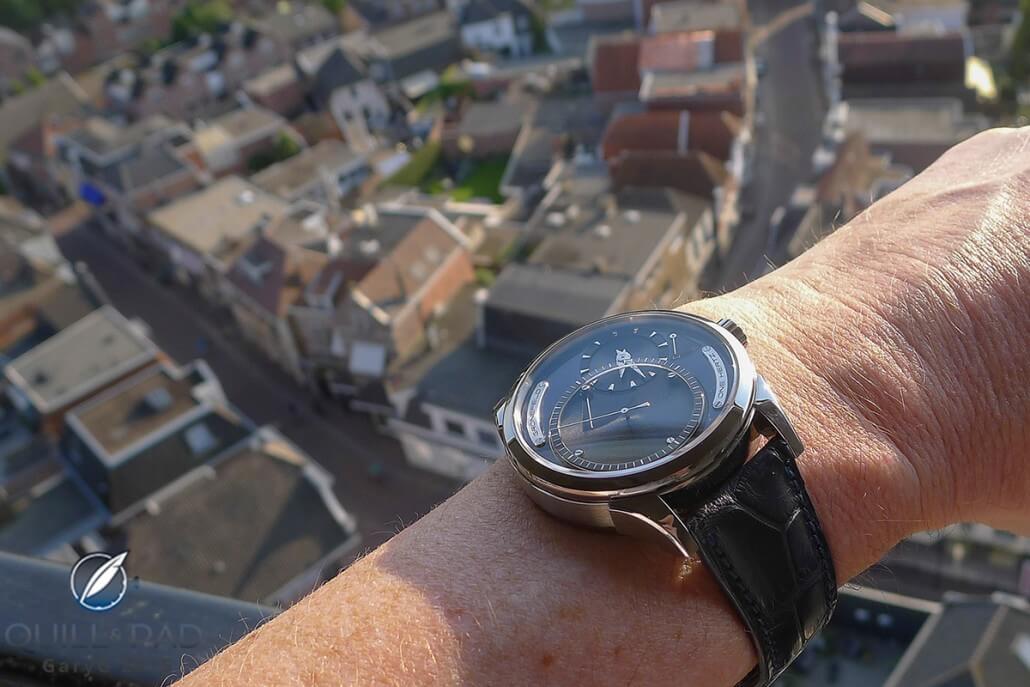


Leave a Reply
Want to join the discussion?Feel free to contribute!